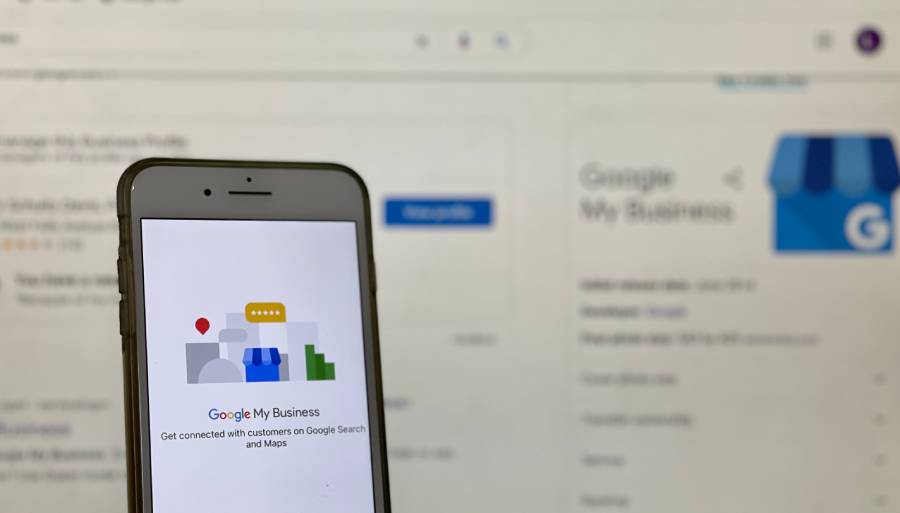In today’s digital landscape, where content is king, the power of words has never been more evident. At the heart of this realm lies a crucial skill that drives marketing success: copywriting. But what is copywriting, and why does it matter so much in the business world?
This article will explore the fundamentals of copywriting and its impact on marketing and sales. You will also discover why it’s a critical skill for any business looking to thrive in the digital age.
Continue reading to discover how mastering the art of copywriting can elevate your business and captivate your audience!
What Is Copywriting?
Copywriting plays an important role in digital marketing. But what is copywriting, and how to do it? Copywriting is a specialized form of writing designed to persuade people to take immediate action.
This action could include making a purchase, signing up for a service, or clicking a link. Copywriting is concise and impactful, unlike content writing, which focuses on providing information and sustaining reader interest. It aims for quick results by creating a sense of urgency and need.
Effective copywriting is used across ads, websites, emails, and social media. In today’s saturated market, it is vital to help brands stand out and connect with audiences. Ultimately, it drives success in marketing campaigns.

The Purpose of Copywriting in Marketing
Copywriting plays a crucial role in marketing for several reasons. It persuades people to take action by emphasizing benefits and providing clear calls to action, such as “Buy Now” or “Sign Up.”
Additionally, it builds brand awareness and credibility by creating a unique voice and showcasing expertise, which helps establish an emotional connection with customers. Effective copywriting also enhances customer engagement and retention by encouraging conversations and offering valuable content, fostering long-term relationships.
In today’s competitive digital landscape, effective copywriting is essential for transforming casual browsers into loyal customers and skeptics into believers. Given modern audiences’ short attention spans, strong copywriting is key to quickly capturing interest and driving immediate actions and long-term loyalty.
Types of Copywriting in Marketing
Advertising and SEO copywriting
Copywriting in marketing involves several distinct types, each serving a unique purpose. Advertising copywriting is designed to make an immediate impact through catchy headlines in print ads, compelling language in TV commercials, and engaging audio in radio spots.
Conversely, SEO copywriting prioritizes visibility by integrating keywords into website content, blog posts, and meta descriptions. This aims to improve search engine rankings.
Sales and social media copywriting
Sales copywriting aims to persuade customers to make purchases by effectively describing products and guiding their decisions. Social media copywriting, on the other hand, adapts to various platforms. It employs concise posts on Twitter, interactive updates on Facebook, and storytelling captions on Instagram to engage audiences.
Email copywriting
Email copywriting encompasses several key types of content:
- Newsletters – Provide valuable information and insights to keep your audience engaged and informed.
- Promotional emails – Designed to drive immediate action, these emails encourage recipients to make a purchase, take advantage of a special offer, or engage with your brand.
- Drip campaigns – Nurture leads over time through a series of carefully crafted messages, guiding them through the buyer’s journey and building a relationship with your brand.
Across all these formats, the goal is to communicate effectively and persuade readers to take action, whether that’s making a purchase, subscribing, or engaging more deeply with your brand.
Key Elements of Effective Copywriting
Headline
A strong headline is crucial in copywriting. It’s the first thing readers encounter and can determine whether they stay interested. A compelling headline grabs attention and entices people to read further. It sets the tone for your content and provides a preview of what’s to come.
Many readers only skim headlines, so a powerful one can effectively convey your main message even if they don’t continue reading. Consider using numbers and specific facts to craft engaging headlines, as these elements make headlines more eye-catching and promise concrete information.
Asking questions in your headlines can also be highly effective. It piques curiosity and motivates readers to seek out the answers. Additionally, incorporating powerful words that evoke emotion—such as “secret,” “essential,” or “breakthrough“—can generate interest and a sense of urgency.
Call to Action (CTA)
Calls to action (CTAs) play a crucial role in copywriting by guiding readers on what to do next and converting them into customers. Effective CTAs might boost conversion rates by creating a sense of urgency and encouraging immediate action, preventing readers from delaying or forgetting to act.
CTAs also provide clear instructions, eliminating confusion about the next steps and making it easier for readers to take the desired action. They come in various forms designed to capture attention and prompt action.
For instance, “Sign up now for free” is a strong CTA. This is because it is straightforward and offers immediate value, with the word “free” reducing barriers to action.
Similarly, “Limited time offer – Buy now” creates urgency and implies scarcity, which can drive quick decisions. “Discover your perfect match” piques curiosity and promises personalization, making it particularly effective for services or products with multiple options.

Value proposition
Copywriting requires effectively communicating value to your audience. Rather than merely listing features, emphasize the benefits and illustrate how your offer enhances lives or addresses specific problems. Customer testimonials can be compelling, providing genuine experiences and social proof of your value.
Furthermore, comparing your offer to alternatives can help readers grasp your unique advantages. When crafting a value proposition, aim for clarity and brevity. Use straightforward language and avoid jargon or complex terms.
In addition, concentrate on your unique selling point—what sets you apart from competitors. Testing different versions of your value proposition can reveal which resonates best with your audience. Refine your message based on audience feedback and data to achieve optimal results.
What Are Good Copywriting Skills?
Good copywriting skills are crucial for creating effective marketing content that resonates with your audience. Your content should convey your message and motivate readers to take action. Creativity and originality are key to generating fresh ideas and developing a unique voice that distinguishes your brand.
Understanding your target audience’s demographics, interests, and pain points can help you craft empathetic and persuasive copy. Knowledge of marketing principles also enables you to tailor content for different stages of the buyer’s journey, employing techniques such as social proof and scarcity.
The ability to write clear and persuasive content using simple language, storytelling, and emotional appeals ties all these skills together. This makes your copywriting resonate with your audience and achieve your marketing goals.
Now, how does copywriting work? Let’s dive deeper into the process of copywriting.
The Process of Copywriting in Marketing
Research
The copywriting process starts with comprehensive research. This entails understanding the product, analyzing the target audience, and evaluating the competition.
To grasp the product, familiarize yourself with its features and benefits by engaging with the product team and, if possible, using it yourself. This firsthand experience allows for more authentic writing.
When analyzing the target audience, develop detailed buyer personas by researching their demographics, psychographics, and communication styles. This insight enables you to craft messages that truly resonate with them.
Moreover, identify your main rivals and scrutinize their marketing materials to examine the competition. Look for gaps in their offerings and ways to differentiate your product effectively.
Drafting
Once you’ve completed your research, proceed to the drafting phase. Start by creating an outline to organize your thoughts and structure your content. Next, write your first draft, concentrating on getting your ideas down without worrying about perfection.
Aim for a conversational tone that engages your audience. Include all necessary details about features and benefits, and ensure your copy is relatable and easy to understand.
However, avoid jargon or complex language that might confuse readers. As you draft, incorporate persuasive elements to enhance the impact of your message.
To make your copy more compelling, use emotional triggers, include social proof to build credibility, and create a sense of urgency to prompt action. Begin with a strong opening to capture attention and conclude with a solid ending to reinforce your message. Remember, this is just your initial draft; you’ll refine and polish it later.
Editing and proofreading
After drafting your work, it’s crucial to move on to editing and proofreading. Start by ensuring clarity: read your text out loud, simplify complex ideas, and eliminate unnecessary words. Verify accuracy by checking all facts and figures, reviewing legal requirements, and maintaining consistency in messaging.
Enhance coherence by ensuring a logical flow of ideas, checking the structure, and reviewing your calls to action. Pay attention to tone and style, ensuring they align with your brand voice. Look for grammatical errors and typos that could undermine your credibility.
In addition, get feedback from others to catch mistakes you might have missed, and use grammar checkers to identify overlooked errors. Finally, ensure your copy engages and maintains the reader’s interest from beginning to end. This stage transforms your rough draft into polished, effective content.
Testing and optimization
A/B testing and performance analysis
The final stage involves testing and optimization. Begin by using A/B testing to compare different versions of your copy. Create multiple variations and employ tools to split-test them with your audience. Start with minor changes and test one element at a time.
Furthermore, analyze the performance by tracking key metrics such as click-through rates and conversions. Utilize analytics tools to collect data on user behavior. Lastly, compare the results to your goals to determine if you’re achieving your objectives.
Continuous improvement and adaptation
Improve your approach based on your findings. Use data to guide revisions and continuously seek feedback from your audience. Implement changes gradually and measure their impact to ensure effectiveness.
You should also stay informed about industry trends and adjust your strategies as needed. This ongoing testing and optimization process helps ensure your copy remains effective.
Common Mistakes to Avoid
Overuse of Jargon and Focus on Features
Two major pitfalls in copywriting are overusing jargon and focusing too much on features. Complex language can confuse readers and make your copy hard to understand. Instead, use simple, everyday words and explain complex ideas clearly.
Regarding features versus benefits, remember that people care more about how a product will help them. While features describe what a product does, benefits show how it improves the customer’s life. So, always connect features to benefits and focus on solving the customer’s problems.
Ignoring audience needs and preferences
Another critical mistake is neglecting your target audience’s needs and preferences. Every audience is unique, and ignoring their specific characteristics can result in a copy that doesn’t resonate.
To avoid this, conduct thorough audience research. Create detailed buyer personas, use surveys, and analyze customer feedback.
Then, tailor your message to your audience using their language and addressing their pain points. It highlights the benefits that matter most to them. By understanding and catering to your audience, you can create a copy that truly connects and achieves your marketing goals.

Conclusion
So, what is copywriting? It is a pivotal skill in the modern digital landscape, where compelling communication is essential for marketing success. It involves crafting persuasive content that drives immediate action and builds long-term customer relationships.
Effective copywriting is not just about creating eye-catching headlines or persuasive calls to action; it’s about understanding your audience, highlighting benefits over features, and continually optimizing your approach based on data and feedback. By mastering the essentials of copywriting, businesses can stand out in a crowded market, engage their audience more effectively, and drive growth.
Happy copywriting!





